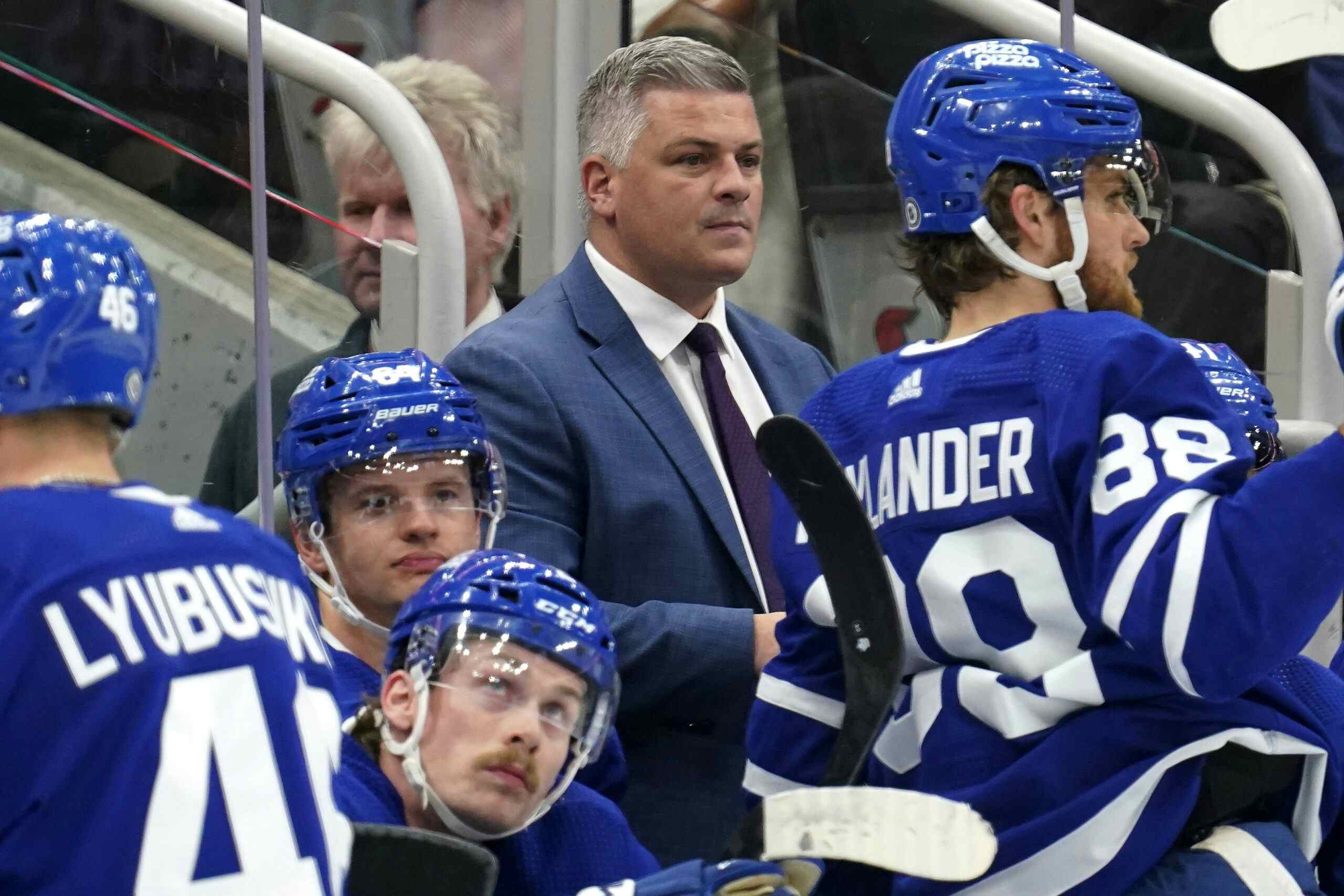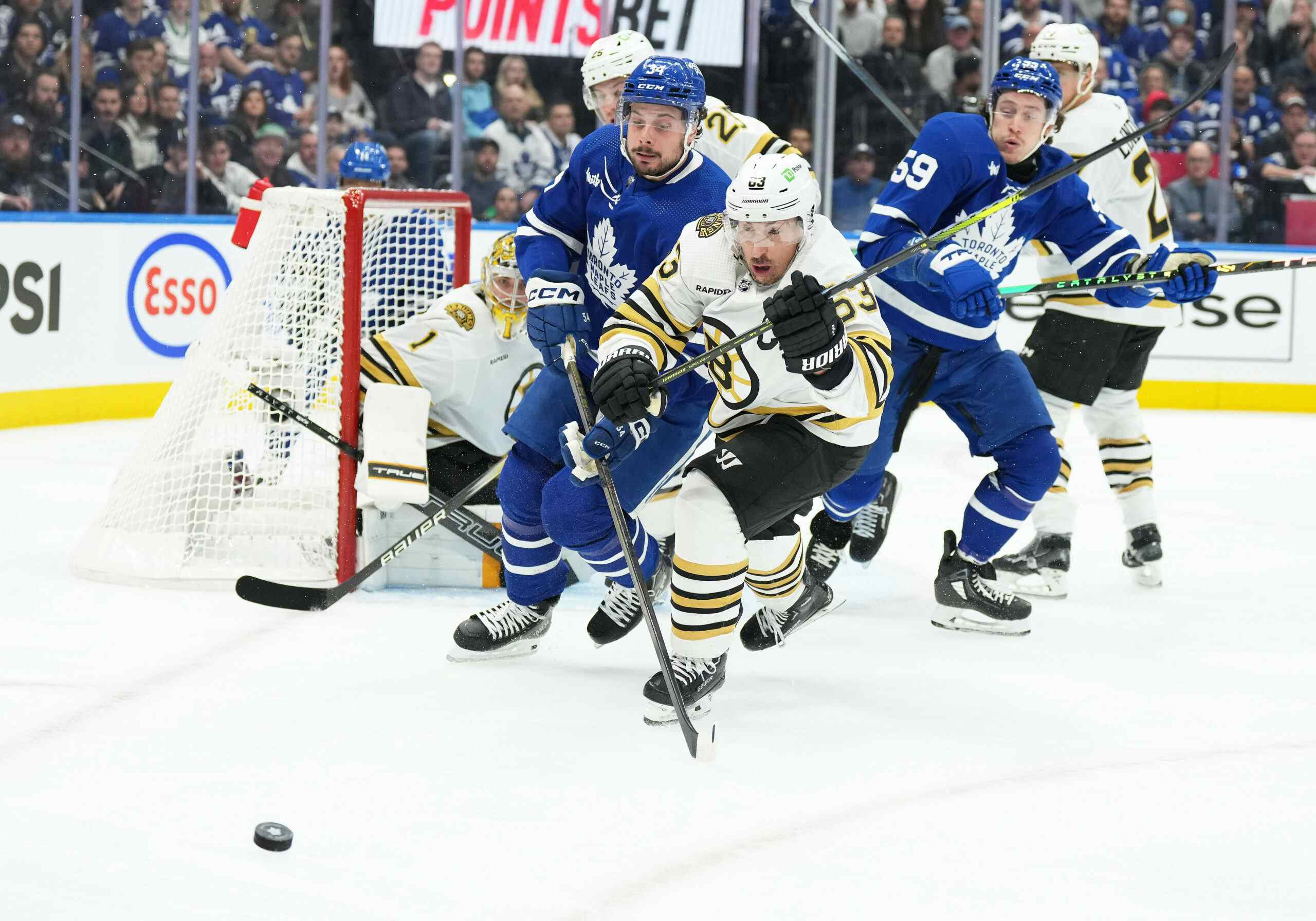Building A Champion Part 2: Evaluating The Big Three
The first step to building a Stanley Cup champion is establishing a core. We’ve done that already in the first part of this series.
To recap quickly, there’s seven key pieces on almost every Cup contender that make up the core: an elite number one centre, an elite winger, an elite d-man, a very good second centre, a strong fourth forward, a solid goalie, and a capable second d-man.
On the Leafs, these are the likely candidates for those spots going forward:
- 1C: Auston Matthews
- 1W: Mitch Marner
- 2C: William Nylander
- 4F: Nazem Kadri
- 1D: Morgan Rielly
- 2D: Jake Gardiner
- 1G: Mystery Goalie
So now the key questions are, is it good enough to win a Cup, and just how long until the team consistently competes for one? I’ve outlined how good a contending team needs to be at each position here. Let’s look into the crystal ball to find out if the Leafs have the right building blocks, starting with the big three pieces: Auston Matthews, Mitch Marner, and William Nylander.
METHOD
All three of these guys are prospects, so really, we don’t have much of an idea of how good they’ll be. They might all be superstars in the making – and they kind of look like it already based on their pre-NHL success – or they could all bust at the same time. There’s no certainty in projecting into the future and that’s especially true for guys who haven’t played an NHL game yet (or just 22 in Nylander’s case).
So how do we get around that? Using an average of comparable players that have already played in the NHL. I already did a similar study for Matthews for THN, but that used NHLe and it was before I saw fellow Nation Network person Jeremy Davis unveil a new prospect grading model called pGPS. He gave me comparables for each of the Leafs Big Three (sidebar: it feels nice writing that) and so I looked at how all the comparable players performed in their age-appropriate season.
Then we’ll compare that to the baselines I measured for each core position in this piece.
Those baselines are based on war-on-ice’s wins above replacement (WAR) stat, which is easily the best barometer for a player’s true talent level as far as total value stats go. It measures all the things we value towards winning (scoring, shot rates, penalty differential and even faceoffs) and weights them appropriately to their worth in goals. Like any stat, it’s not without its hiccups, but it’s still the best way to measure a player’s worth.
There are four projections for each player:
“Best” Case: The average of the top half of the comparable players
Average: The average of all comparable players
Above Average: The average between best case and average
“Worst” Case: The average of the bottom half of the comparable players
Realistically, their value won’t be so straightforward anyways. There’ll be good seasons, bad seasons and great seasons. They’ll likely fall anywhere within the spectrum between best and worst case and it’s impossible to judge when at this point in time. Keep in mind this is just a rough guideline for what to expect.
The one we’ll focus on, for the most part, is the above average projection. Here’s why. The average likely underrates them as it’s a conglomeration of the best and worst comparables listed. That makes it tough to compare to the Cup contender position baselines which were derived off elite players on elite final four teams in their own “best” case seasons. If the Leafs do contend, it’ll be because The Big Three are closer to a “best” case season than an average one.
As elite level prospects, it’s probably more likely that The Big Three fit in more with the top half comparables over the bottom half. It’s presumptuous to say that about players who have little to no NHL experience, but I think we’re allowed to be optimistic based on what they’ve shown outside the NHL.
So without further ado, here’s how good The Big Three will probably be over the next five seasons.
1C: AUSTON MATTHEWS
1C Baseline WAR: 3.4
Comparables: Phil Kessel, Alex Ovechkin, Patrick Kane, Colin Wilson, Nicklas Backstrom, John Tavares, Mikkel Boedker
As you probably know, not many players go from the Swiss League to the NHL. That made finding comparables tough. Jeremy had a workaround for that, though; use the World Juniors. It’s wrought with small sample size issues, but it should be fine. After all, star prospects usually shine at the World Juniors and doing so is a good sign for the future. Matthews did just that scoring 11 points in seven games for the US. Of his comparables, only Tavares had a better points-per-game (he was tied with Kessel). If Matthews turns out anywhere close to as good as Tavares, the Leafs will have their elite number one centre very soon.
Projection:

How Long Until He’s Ready For Contention: All signs point to a learning curve in year one, modest growth in year two, and a giant step in year three. Whether the breakout in his third year will be big enough is the question, but three-to-five years feels like a reasonable estimate for when Matthews can become a legit contender-calibre first-line centre, but it’s more likely that it’s sooner rather than later.
1W: MITCH MARNER
1W Baseline WAR: 3.1
Comparables: Patrick Kane, Sam Gagner, Bryan Little, Mike Richards, Steven Stamkos, Corey Perry
That’s an odd group of comps, but that’s mostly because Marner’s draft+1 season was incomparable. Marner put up 116 points in 57 games and was somehow even more sensational in the playoffs leading his London Knights to a Memorial Cup. Only Kane and Gagner were above 90 percent similarity and neither were the correct age (an exception I had to make here). Marner is uniquely gifted and thus tough to peg down. If he can be a Patrick Kane-lite for the Leafs, that would be a huge asset to the teams’ Cup aspirations.
Projection:

How Long Until He’s Ready For Contention: Best-case scenario, he’ll be ready by year three like Matthews, but it’s more likely it takes a while to get there for him, especially considering his frame. Anywhere from three-to-five years (sensing a trend here?) sounds reasonable again, but this time, we’d lean towards a bit later in the time frame. He should still be very good almost right away at the very least.
2C: WILLIAM NYLANDER
2C Baseline WAR: 2.2
Comparables: Jordan Eberle, Jiri Tlusty, Logan Couture, Claude Giroux, Dustin Brown, Sergei Kostitsyn, Drew Stafford, Patrice Bergeron, Bobby Ryan
Again, it was difficult to hammer down comparables for Nylander mostly because there are not many 19-year-olds that play in the AHL – and do so well at it too. Nylander mustered 45 points in 38 games which is great for a teenager in the AHL. The guys who did similarly are a decent mix of elite, very good, and okay players. Couture, who’s currently anchoring a second line for a Cup finalist, would be a decent baseline for Nylander. If he can get to that level, the Leafs would be in good shape.
Projection:

How Long Until He’s Ready For Contention: Now? I mean, yeah it’s probably a little shocking, but he played at a 49 point pace in his small stint with a team trying to lose in his first real taste of the NHL. This kid is for real, but he’s also the farthest along of The Big Three, as he’s now entering his third season after being drafted. Nylander should be very steady for the next five seasons, and very good too.
CONCLUSION
The Big Three are going to be very good, and it shouldn’t take too long either. Around years three-to-five, all three should be playing at an elite level if everything goes well. There might be a learning curve over the first few seasons, some possible dropoffs after high-level play, injuries, you name it. But right now, there’s very good reason to be optimistic as a Leafs fan as these three are a damn good trio to build around.
As for the rest of the core, mainly the ones already on the roster, we’ll get to them in part three.
Recent articles from Dom Luszczyszyn





